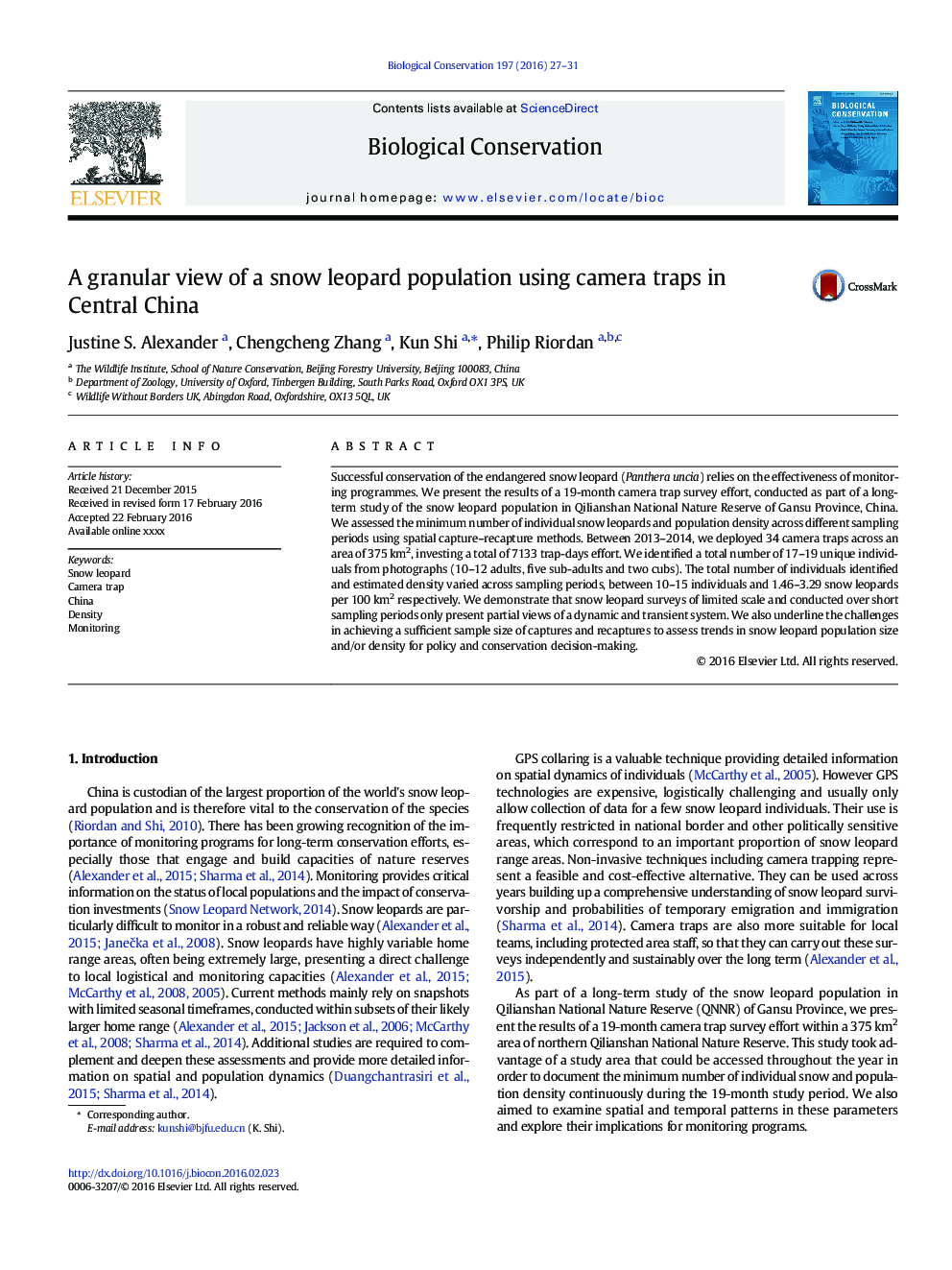| Article ID | Journal | Published Year | Pages | File Type |
|---|---|---|---|---|
| 6298442 | Biological Conservation | 2016 | 5 Pages |
Abstract
Successful conservation of the endangered snow leopard (Panthera uncia) relies on the effectiveness of monitoring programmes. We present the results of a 19-month camera trap survey effort, conducted as part of a long-term study of the snow leopard population in Qilianshan National Nature Reserve of Gansu Province, China. We assessed the minimum number of individual snow leopards and population density across different sampling periods using spatial capture-recapture methods. Between 2013-2014, we deployed 34 camera traps across an area of 375Â km2, investing a total of 7133 trap-days effort. We identified a total number of 17-19 unique individuals from photographs (10-12 adults, five sub-adults and two cubs). The total number of individuals identified and estimated density varied across sampling periods, between 10-15 individuals and 1.46-3.29 snow leopards per 100Â km2 respectively. We demonstrate that snow leopard surveys of limited scale and conducted over short sampling periods only present partial views of a dynamic and transient system. We also underline the challenges in achieving a sufficient sample size of captures and recaptures to assess trends in snow leopard population size and/or density for policy and conservation decision-making.
Related Topics
Life Sciences
Agricultural and Biological Sciences
Ecology, Evolution, Behavior and Systematics
Authors
Justine S. Alexander, Chengcheng Zhang, Kun Shi, Philip Riordan,
